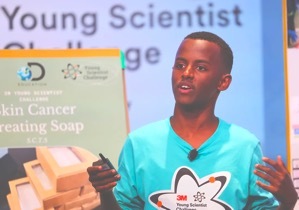Q1. What is Design Thinking? Step 1
STEP 1: What Is Design Thinking?
Read the following articles describing how students use a problem solving process to make a difference.
The first article is about three students' science fair projects: Article Source: Teen-Created Software IDs Skin Conditions, Risky Drivers and More
The second article is about a Virginia high school student who looks into a skin cancer problem with exciting results.
Questions to Think About as you Read:
- What event(s) in their lives caused each student to identify a problem they wanted to solve?
- What were some of the things they did to address the problem?
- What positive impact did their solution make on the people they were helping, and how might this help others?
When finished, check with your teacher for further guidance on how to share the information you read (pair/share, group share, whole class share).

Proceed to the next page to practice your skills at solving a Breakout Game
Competencies & Standards
MITECS Michigan Integrated Technology Competencies for Students, and
1. Empowered Learner
b. build networks and customize their learning environments
in ways that support the learning process
4. Innovative Designer
a. Know and use a deliberate design process for generating ideas, testing theories, creating innovative artifacts or solving authentic problems
b. Select and use digital tools to plan and manage a design process that considers design constraints and calculated risks
7. Global Collaborator
b. use collaborative technologies to work with others, including peers, experts or community members, to examine issues and problems from multiple viewpoints
c. contribute constructively to project teams, assuming various roles and responsibilities to work effectively toward a common goal
d. explore local and global issues and use collaborative technologies to work with others to investigate solutions
6. Creative Communicator
a. Choose the appropriate platforms and tools for meeting the desired objectives of their creation or communication
Websites and Documents
Websites
- Engineering Design Process
- Fidgits to the Rescue
- Source #1: Teen-Created Software IDs Skin Conditions, Risky Drivers and More
- Source #2: Virginia High School Student Creates Soap to Fight Skin Cancer
- Scientific Method
Videos from Outside Sources
21t4s Videos
21t4s Documents & Quizzes
21t4s Digital Breakout Challenge





